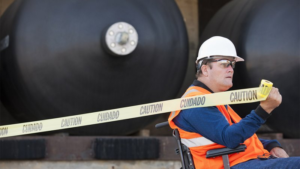Related Courses
When hazardous substances are present in the workplace, it’s very important the risks are properly recognised and dealt with to ensure the safety of all employees.
The risks from most hazardous substances can easily be handled by employing several sensible control measures to minimise their dangers.
Risk Assessments
Under COSHH, all employers must conduct a risk assessment detailing the hazardous substances they are working with, the associated risks and how these are minimised or eliminated. Risk assessments should be reviewed regularly and need to be amended if a new hazardous substance is introduced to the workplace.
The risk assessment should achieve the following things:
Identify the hazards – Work out which substances are harmful, with reference to their product label or MSDS (material safety data sheet) if required. Include any substances that are produced by work processes as well.
Decide who might be in danger from the substance – Who is likely to come into contact with the substance and who is at greater risk of prolonged exposure? This includes visitors to the site, contractors and the public as well as employees.
Plan what can be done to minimise exposure – Control measures need to be put into place to make sure nobody comes to any harm from exposure to the hazardous substance.

Hierarchy of Control Measures
Introducing appropriate control measures is a key part of an employer’s responsibility under COSHH. Organisations can decide on the right control measures by thinking about the hierarchy:
Elimination – By far the best way to handle a threat to employees’ health and wellbeing is to eliminate it entirely. Is the process that requires or produces the hazardous substance actually necessary? If so, is the hazardous substance a necessary ingredient? By banning lead in petrol in January 2000, the UK government removed a hazard by eliminating the harmful substance.
Substitution – Sometimes, the process and substance in question are indeed necessary, but can be replaced with other, less dangerous alternatives. When considering alternatives, it might help to think about the hazardous substance in terms of “function, use and need” – which properties make the substance useful in this context, and are there less toxic alternatives that share these properties? In the textile industry, for example, there are many different substances that can be used instead of phthalates in PVC. However, there would be different substitutions depending on what use the substance served in the process.
“Substitution” can refer to the substance itself or the process that uses it. Either can be swapped for better alternatives depending on the circumstances.
Engineering Controls – These control measures involve removing the hazard from the worker, as far as possible. They may involve redesigning processes or equipment so that there is a physical barrier. In the best case scenario, moving the operator to a remote location or automating the hazardous part of a process removes the contact between the employee and the hazardous substance entirely.
Ventilation systems can be put in place to safely remove any fumes before they’re inhaled. Industries dealing with chemicals, paints or foodstuffs can find these useful.
Administrative Controls – Providing information and training to employees to make sure safety procedures are followed is an important step in controlling hazardous substances. Effective training is part of an employer’s role under COSHH, and the only reason it’s ranked below the other control systems is because it relies on human behaviour and should therefore be used in conjunction with other control measures where possible.
Personal Protective Equipment (PPE) – As the last line of defence protecting workers from direct contact with the hazardous substance, PPE should only be used as a last resort and in conjunction with other control measures further up the hierarchy. Gloves, footwear, body suits and ear and eye protection must all be provided by the employer if they’re required to perform part of an employee’s job.
In 2014, a 21-year-old agency worker on his first day of full-time employment was left seriously injured after being exposed to alkaline cement slurry whilst wearing inadequate PPE. He needed plastic surgery and was left with lifelong scars on his legs. His employers, Stressline Limited, were fined £12,000 and ordered to pay costs of £2,121. Unfortunately, the effects on the young worker were severe and he was reporting problems walking even a year after the incident.
There are control measures to suit all situations and it’s up to employers to decide which ones will be most effective for protecting their workers, their clients and the environment. Risk assessments are very helpful tools for deciding which techniques should be used.



